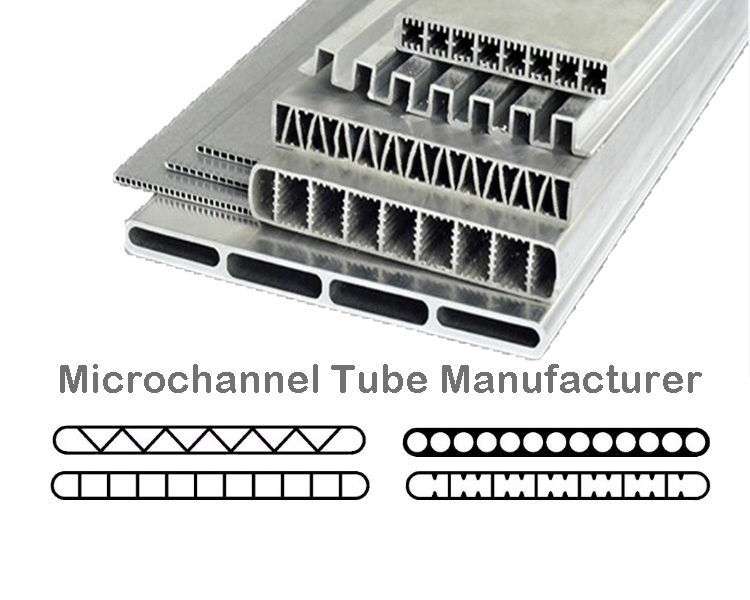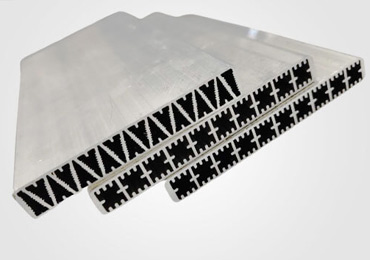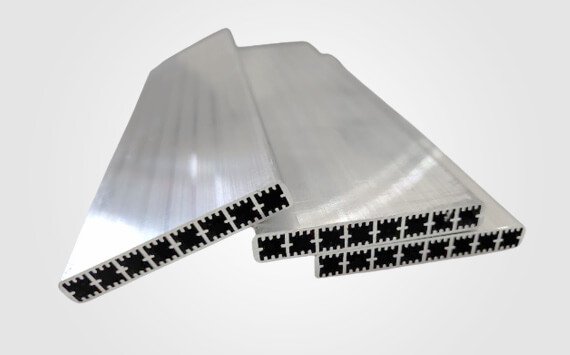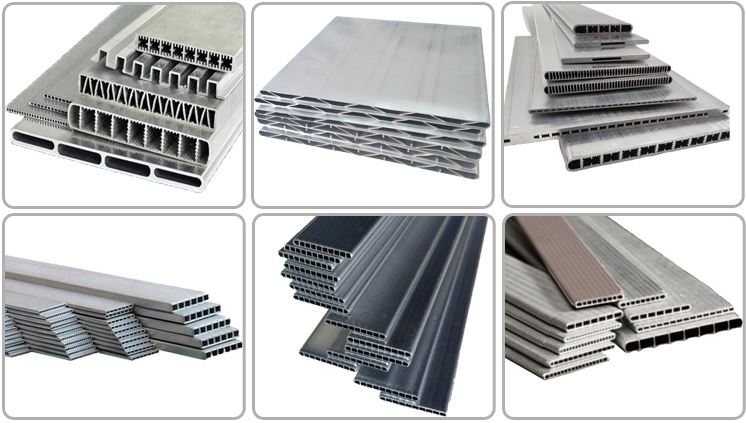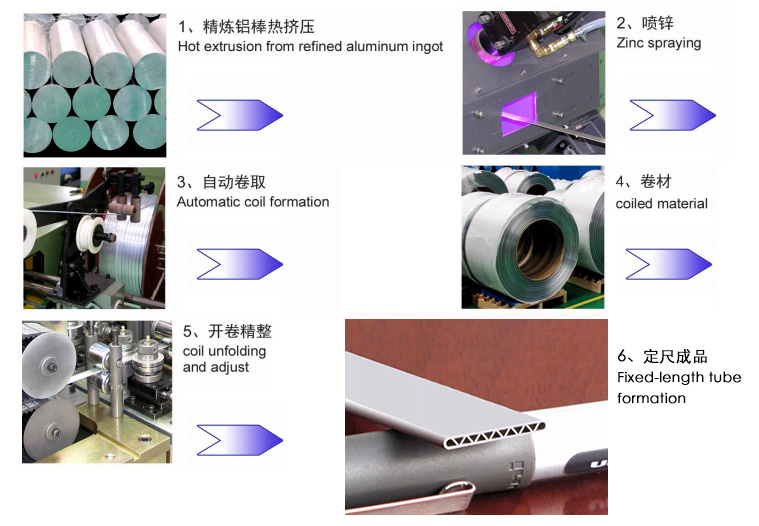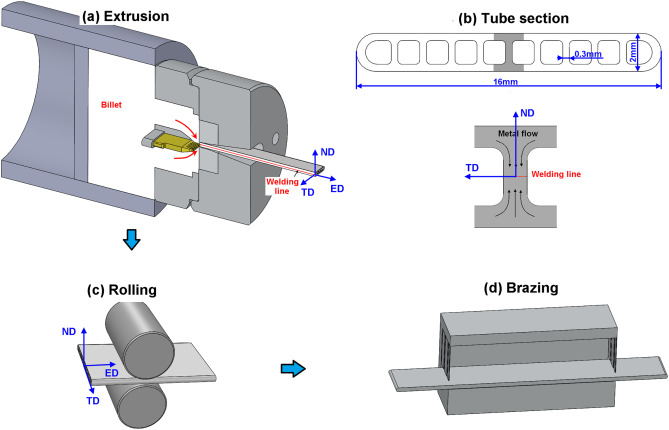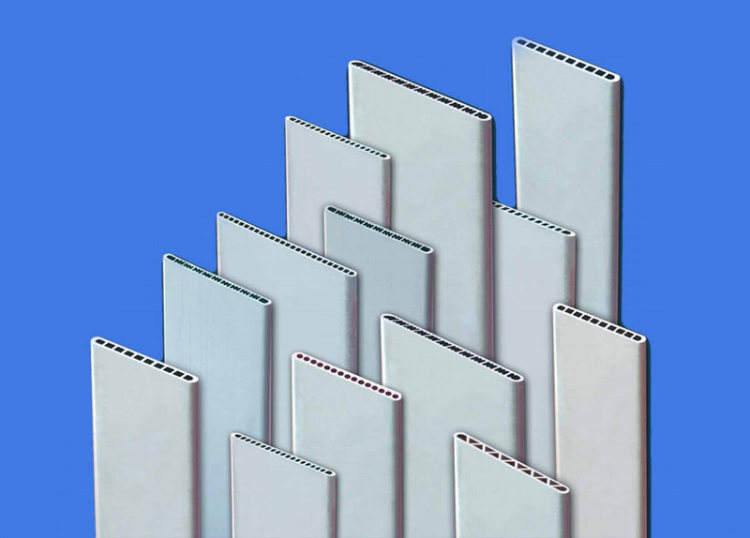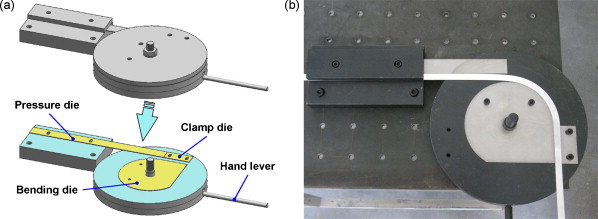- One-stop Design & Manufacturing Solutions
- Advanced Manufacturing Capabilities
- Standard Existing Size save your initial cost
- Fast Shipment of Standard Aluminum Tubing Size




Microchannel Tube
Wellste, an ISO9001-2001 certified company, stocked a huge range of different microchannel tubes. Mainly are aluminum radiator flat tube, microchannel parallel flow aluminum flat tube, microchannel tube for heat exchanger, microchannel condenser aluminum flat tube, and many more.
- 20+ Years of Manufacturing Experience
- Advance aluminum microchannel production
- Star service to meet all your needs
- Cost-effective Solution
Your Reliable Microchannel Tube Supplier and Manufacturer
Wellste micro-channel tube is commonly made from 1000 series aluminum alloy no. However, 2000 series, 3000 series, 5000 series, 6000 series, and 7000 series alloy no. can be manufacture. We will fabricate your micro-channel tube according to your specific alloy requirements.
| Item Type | Micro-channel Tube |
| Material | Aluminum Alloy 1000 Series,3000 Series,6000 Series, |
| Temper | O H12.H14.H16.H18.H22.H24.H26.F |
|
Size
|
width:6mm-40mm |
| Height:0.8mm-8.00mm | |
| Wall thinkness:0.12mm Min | |
| Length:As Request | |
| Wall Thickness | ≥0.3MM for aluminium micro channel tube |
| Elongation | 22%”}”>>22% |
| Application | refrigerator/airconditioner/evaporator/condenser/heat exchanger/freezer/car radiator/gas oven/HVAC&R system |
| Free Samples | Yes,we can provide free sample |
Wellste microchannel tube is also named multi-port extrusion. It is extruded from a rectangular and flat tube, made from various channels. Wellste microchannel tube grows the heat transfer into a higher surface according to volume ratio.
So, if you’re looking for the best micro-channel tube at the best price, always choose Wellste!
- Projects
- Description
Wellste is one of the advanced manufacturers working in China to fill the production of a micro-channel tube. As a leading supplier of the high-quality micro-channel tube, our team ensures the highest quality fit, finish, and bend to complete your project.
| Surface treatment | Anodizing, Mill finish, Electroplating, Polishing, Sand blasted, Powder coating, Silver plating, Brushed, Painted, PVDF etc. |
| Deep process | CNC,drilling,milling,cutting,stamping,welding,bending,assembling,Custom Aluminum Fabrication |
| MOQ | Low MOQ |
| OEM & ODM | Available. our engineer can check and discuss your design , great help ! |
| Free Samples | Yes,we can provide free sample |
| Delivery time | 15-20 days after sample confirmed & down payment, or negotiated |
| Port | Shanghai Port |
We are a manufacturer supplying Microchannel tube OEM/ODM service.
Yes, Wellste is pleased to provide Microchannel tube for you to check the quality, Normally the sample is for free for saving your cost, But it will require tooling cost if custom size.
We always supply a pre-production micro-channel tube sample before mass production, and we always have a final Inspection before shipment.
We provide Low MOQ for micro-channel tubes. 1pc sample is free for you to check our quality.
It only takes 5-7 days to complete your order if the microchannel tube size is in stock.
For custom aluminum extrusion, It takes a little bit long time to make extrusion tooling, commonly it totally requires 25-30 days to finish production
Products You May Looking for
Wellste: Your Best Micro-channel Tube Supplier in China
Get a high-quality micro-channel tube only in Wellste. We have well-trained engineers that will help to manufacture micro-channel tube as per your specifications. Besides, Wellste is known as China’s famous micro-channel tube manufacturer and supplier, working nearly 20 years.
Wellste micro-channel tube is a special kind of porous flat tube material. The micro-channel tube is designed of refined aluminum rod, anti-corrosion treatment, zinc spraying, and hot extrusion.
You can avail of our micro-channel tube in different alloys and sizes, guaranteed the best characteristics for any purpose required. Wellste micro-channel tube is also accessible in many standard mill-finishes, anodized, powder-coated, electrophoresis coating, and many more.
All types of Wellste micro-channel tube brings limitless advantages and features to your different applications. If you’re required to widen the competitive advantage of aluminum heat exchangers, then you must use a micro-channel heat exchanger.
Anodized micro-channel tube is available in color black, silver, gold, champagne, and more. If any color requires, Wellste can custom micro-channel tubes according to your specifications. We stock a huge range of micro-channel extruded aluminum tubes in many different coatings, ready for oven brazing and assembly.
Wellste specializing in the development, research, and design of micro-channel tubes to be delivered to many countries. Our wide range of micro-channel tube takes you almost all selections in the industry.
Wellste is a well-known manufacturer of custom and standard micro-channel tube, ready to shipped worldwide. We produce a complete range of production lines and machines for micro-channel tube production.
We develop this micro-channel tube to satisfy your requirements. No matter how big or small your orders, we can accommodate your needs.
Contact is immediately for further information about Wellste micro-channel tube.
Aluminium Extrusion Motor Body
Microchannel Tube: The Ultimate FAQ Guide
This guide covers everything you’re looking for about aluminum Microchannel tube.
So, if you have any question about these aluminum extrusion products, you will find the answer right here.
Keep reading.
- What Is A Microchannel Tube?
- What Are The Applications Of Microchannel Tubes?
- How Do You Manufacture Aluminum Microchannel Tube?
- What Are The Benefits Of Microchannel Aluminum Tubes?
- What Are Aluminum Microchannel Tube Heat Exchangers?
- What Are Some Properties Of Microchannel Aluminum Tubes?
- What Are Some Tube Technologies You Can Find In Aluminum Microchannel Tubes?
- What Geometries Can You Find In Aluminum Microchannel Tubes?
- What Is The Design Of Microchannel Aluminum Tubes?
- What Kind Of Fins Can You Find In Microchannel Aluminum Tubes?
- What Is The Importance Of Manifolds In Microchannel Aluminum Tubes?
- What Are Flow Passages In Microchannel Aluminum Tubes?
- What Should You Consider When Choosing Connections In Aluminum Microchannel Tubes?
- Why Is It Important To Coat Aluminum Microchannel Tubes?
- What Is Epoxy Electrophoretic Coating In Microchannel Tubes?
- Can You Bend Microchannel Aluminum Tubes?
- Do Microchannel Tubes Come With Casings?
- Which Aluminum Grade Do Use To Manufacture Aluminum Microchannel Tube?
What Is A Microchannel Tube?
Aluminum microchannel tubes
A microchannel tube is also known as a multi-port extrusion tube.
Microchannel tubes have a flat and rectangular shape containing several channels.
These channels will increase the rate of heat transfer since it has a higher surface area to volume ratio.
There are various sizes and aluminum alloys that make the microchannel tube to ensure it has suitable characteristics for the application.
Besides, you can get microchannel tubes with a coating, making them ready for the assembly process and oven brazing.
What Are The Applications Of Microchannel Tubes?
There are several instances you can use microchannel tubes, and they include the following:
- Refrigerators
- Air conditioners
- Condensers
- Freezers
- Evaporators
- Gas ovens
- Car radiators
- Heat exchanger
- HVAC and R systems
- Infrared detectors
- Microelectronics
- Power and process industries
- Aerospace
- Bioengineering
- Powerful laser mirrors
How Do You Manufacture Aluminum Microchannel Tube?
There are various stages that manufacturers undertake to make a microchannel tube.
These stages entail the following:
Aluminum microchannel tube extrusion process
Gathering Aluminum Rods
In this stage, you will gather all the aluminum metal before beginning the manufacturing process.
Cleaning Surface Impurities
Once you have the aluminum in sufficient amounts, you will clean it to remove any impurities that stick to the surface.
This will ensure the final product is of good quality.
Ultrasonic Vibration
This entails exposing the aluminum to mechanical vibrations that have similar sound waves.
Besides, the frequency of the waves is above that which the human ear can hear.
This is a process of further cleaning the aluminum rods as they sit inside a water tank.
Aluminum Rod Heating
In this stage, the aluminum experience thermal expansion as heat will increase the vibrations of atoms within the metal.
This causes the aluminum to expand, thereby, its length, volume, and surface area will increase.
Besides, this process allows you to mold the aluminum to the desired shape.
Mold Heating
This process entails making the aluminum malleable making it ready for the extrusion process.
Besides, this process allows you to mold the aluminum without it breaking or cracking.
Extrusion
In this stage, you will force the aluminum alloy through a die.
The die has a specific cross-sectional profile that allows the aluminum to have the shape of the die.
ARC Zinc Spraying
This process assists you to coat the aluminum material with zinc hence increasing its resistance against rust and corrosion.
Wire Arranging
In this stage, you will arrange and wind the wire from the aluminum material readying them for the next phase.
Semi-finished Product
In this stage, the microchannel tube is still in a raw state and needs to be cut to specific sizes.
Straightening And Cutting
Here, you ensure that the microchannel tube is straight before cutting to the desired size.
Finished Product Sizing
In this stage, you ensure the final product is of the right size and dimension before shipping.
Packing
Once the final product passes inspection, you will package them, readying them for transportation.
Aluminum microchannel tube extrusion
What Are The Benefits Of Microchannel Aluminum Tubes?
There are several benefits to using microchannel tubes in your applications.
These entail the following:
Increase In Heat Transfer
The microchannel tubes have a high surface area to volume ratio.
This difference increases their efficacy at transferring heat from the heat source.
Low Material Cost
Aluminum is a readily available material that happens to cost less than other types of metals.
This allows the manufacture of microchannel tubes at fair prices than the alternative competitive materials.
Lightweight
Aluminum material is lightweight when you compare it to steel or other metals.
This allows you to incorporate microchannel tubes in several applications as they will not substantially increase the overall weight of the product.
The microchannel tubes will fit in the available space and not make the product heavy.
Anti-corrosion
Aluminum material is resistant to corrosion making it suitable for the manufacture of microchannel tubes.
This property makes it last for several years, hence good value for money.
High Precision
Microchannel tubes come in precise shapes and configurations allowing them to effectively dissipate heat.
High Surface Finish
Microchannel tubes can come in a variety of surface finishes that enhance the appearance and protection of the product.
Examples of finishes you can use include the following:
Mill Finish
This treatment entails forming a texture on the microchannel tube after exiting the roll mills
A mill finish will form rough surfaces and does not entail chemical or mechanical finishes.
Powder Coating
The powder coat offers protective and decorative layers to the microchannel tube through the electrostatic process.
Mechanical Finish
This method involves buffing, polishing, blasting, sanding, or gritting.
Besides, a mechanical finish will improve the surface quality of microchannel tubes.
Pre-treatment
This technique entails etching or cleaning to treat the surface of the microchannel tube.
The etching or cleaning process entails the use of alkaline or acidic substances.
What Are Aluminum Microchannel Tube Heat Exchangers?
Microchannel heat exchangers [MCHEs] are a version of fin heat exchangers and tube heat exchangers.
Here, a single fluid such as water will flow via the tubes or the enclosed channels.
Concurrently, air will flow in a cross-current direction via the fins.
Improvement in efficiency led to the introduction of microchannel heat exchangers in HVAC systems.
Most manufacturers concentrate on using aluminum materials and brazing for the construction of microchannel heat exchangers.
High temperatures in the brazing process produce strong metallurgical alloy within the joints.
Besides, this technique will lower its resistance to heat transfer.
What Are Some Properties Of Microchannel Aluminum Tubes?
Some of the properties you can find in microchannel tubes entail the following:
- High corrosion resistance
- Low weight
- Good thermal conductivity
- High recycling value
- High electrical conductivity
- Narrow tolerance range
- Good forming capability
- High surface quality
- Good bending capability
- Suitable pressure resistance
- Ease of maintenance
- Raw material cost is optimized
What Are Some Tube Technologies You Can Find In Aluminum Microchannel Tubes?
Microchannel tubes have thin walls hence they need to have high performance, superior strength, and be cost-effective.
Besides, all these properties are vital while still retaining the compact size of the microchannel tube.
Examples of tube technologies you can use in microchannel tubes entail the following:
Dimple Tube Technology
This technology offers high performance in the microchannel tubes.
It will increase the fluid turbulence and rate of heat transfer by breaking boundary layers within the tubes.
Multi-chamber Tube Technology
This technology will lower the thickness of the core for a tight space constraint.
Besides, it provides high performance and mechanical stability within a minimal area.
Also, they are suitable for high-pressure applications.
End-free Tube Technology
For standard microchannel tube headers, the tubes can come with no form at the ends.
This will provide no tube-to-header joint which may cause interruption.
Besides, it offers a high leak-free brazing process.
What Geometries Can You Find In Aluminum Microchannel Tubes?
Microchannel tubes have several parts and connectors that ensure a successful mount.
These entail the following:
- Multiport tubes
- Airside fins
- Manifolds
- Dividers
- End caps
- Adhesive shrink sleeves
- Mounting brackets
- Connection pipe plugs
- Reinforcement bars
- Side fixtures
- Isolating washers, etc.
Microchannel aluminum tube
What Is The Design Of Microchannel Aluminum Tubes?
There are various designs you can find in microchannel tubes.
These entail the following:
Triangular Ports
The fins in this microchannel tube are in the shape of a triangle.
Square Ports
Here, the fins are in the shape of a square.
H Ports
In this design, the fins are in a square configuration.
Also, within the square configuration, some fins run partially from top to bottom, on both sides.
Circular Ports
The fins in this design are in the shape of a circle.
What Kind Of Fins Can You Find In Microchannel Aluminum Tubes?
The design of microchannel tubes can come with either louvered fins or flat fins.
Besides, this will depend on the performance you need, conditions, and your requirements.
Louvered fin microchannel tube will provide a higher heat transfer rate but also have a high-pressure drop on the air sides.
Flat fin microchannel tubes will provide better characteristics on certain usages, for instance, frosting conditions.
Here is how these two fin designs compare:
Flat Fins
This fin design has several advantages for industrial usages.
For instance, industrial condensers will function with a high air-to-refrigerant temperature delta.
In such a scenario, the surface area of the flat fin microchannel tube will match the application perfectly.
Louvered Fins
This fin design will increase the rate of heat transfer by offering several flat-plate edges.
These flat-plate leading edges have a higher rate of heat transfer coefficient.
Louvered fin microchannel tubes will increase the rate of heat transfer by a factor of between 2 and 3.
This is high when you compare it to flat fin microchannel tubes.
Besides, louvered fin microchannel tubes offer additional advantages in that you will increase the rate of heat transfer without increasing flow resistance.
Some factors you need to consider when balancing heat transfer and air resistance in louvered fin microchannel tubes include:
- Height of the fins
- Louver angle
- The number of louvers
- Pitch of the louver
- Fin geometry
What Is The Importance Of Manifolds In Microchannel Aluminum Tubes?
The manifolds in microchannel tubes are round in shape and the material for its construction comes from AA4045 aluminum alloy.
Besides, this alloy comes with either AA3005-H14 clad alloys or AA3003-H14 clad alloy.
This combination will offer an excellent performance within the brazing and enhanced corrosion resistance in various applications.
Besides, you can select manifolds with various diameters and wall thicknesses to ensure optimum design performance.
The diameter can range between 16 mm and 50 mm, while the thickness of the wall ranges from 1.2 mm and 2.3 mm.
Choosing the correct size of the manifold is vital to ensure the proper distribution of fluids along the microchannel tube.
Also, it provides optimal operation of the microchannel tube within partial heat load and full heat load.
The outlet manifold of the condenser designs containing vertical microchannel tubes has baffles.
Baffles will prevent the gas within the system from escaping the coil but rather acts as receivers that accumulate and hold the fluid.
Also, the excess fluid charge goes back up into the lower part of the manifold ad assist in optimizing system charge.
Built-in refrigerants receivers enhance the operation of part-load condensers.
Besides, you can remove the liquid refrigerant receiver from the system when the outlet refrigerant manifold contains ample volume.
When installing microchannel tubes, ensure the connection of the outlet refrigerant is lower than or at the same level as that of the inlet connection.
Manifolds also come closed with end caps that can have isolated divisions.
These divisions will separate the flow passages within multi-pass condenser coils.
Besides, you can identify the dividers by the notches that are on the outer surface of the manifold.
What Are Flow Passages In Microchannel Aluminum Tubes?
Microchannel tubes will often come with several passages or tube sets.
Also, the tube sets will contain fewer tubes with every successive pass.
The tube sets for every pass isolate from one another with the help of manifold dividers.
Notches that are displaying on the manifold will assist in identifying the location of the dividers.
Also, it will assist in identifying the arrangement of the passages within the microchannel tube condenser coil.
There is a reason for having several pass designs in the microchannel tube condenser coil.
The density of the cooling fluid will steadily increase when it flows via the coils of the condenser in the microchannel tubes.
This will necessitate the passages to get smaller successively in the flow direction of refrigerants.
It is this essential to determine the right pass arrangement and the number of tubes of every pass.
This will ensure you achieve an optimum heat duty within the condenser when the pressure of the refrigerant drops.
What Should You Consider When Choosing Connections In Aluminum Microchannel Tubes?
Most connections you will find in condenser coils are mainly from copper.
However, there are other types of materials you can use to make the connections.
These include stainless steel, aluminum, or copper, and the diameter, bend-angle, length, etc., rely on your specifications.
Here are some factors to consider as you select the connections you will use in microchannel tubes:
Connection Location
The location of the pipe connections can be on the following:
- Side of the microchannel tube
- On the face of the system
- At an arbitrary angle
- On the manifold’s end
Besides, you can choose the location area individually depending on the inlet and outlet of your system.
For instance, the inlet of a refrigerant connection is usually higher than or at an equal position to the outlet connection.
This is to allow gravity to help with the flow.
Connection Type
For instance, if you need to join the coil in refrigerators to the pipework, you need a specific type of connection.
There are various standard connection types such as:
- Flanged connection
- Sweat connection
- Threaded connection
Besides, depending on your specifications, you can have different connection types with various standards and specifications.
Depending on the system requirements and the microchannel tube, you can equip the system with various inlet and outlet connection types.
These entail the following:
- Aluminum flanged connection
- Sweat connection made from copper
- Threaded connection pipes made from stainless steel
- Copper pipes that have soldered in the threaded brass fittings, etc.
Also, there are several types of inlet and outlet connections you can find for your system.
Microchannel tubes can come with the following fittings to act as a seal:
- Shrader valves suitable for coils with a charge over 1 bar of gas pressure
- Brazed-in end caps suitable for coils with a charge exceeding 1 bar of gas pressure
- Rubber plugs suitable for coils that are charged with a pressure level below 1 bar
- Plastic caps suitable for empty coils
- No fitting suitable for empty coils
Connection Orientation
The geometry of the connection pipes depends on the pipework available for the system you are using.
Here are examples of geometries you can find:
- Straight connection
- Elbowed at any angle to the coil planes
- Elbowed at an arbitrary angle in two or more planes
Why Is It Important To Coat Aluminum Microchannel Tubes?
Corrosion and deterioration of aluminum material of the microchannel tubes may affect their performance.
Deterioration may happen due to chemical or physical reactions with environmental elements.
This may cause failure or degradation in terms of performance to the microchannel tube.
Also, there will be an improper heat exchange at the location of the corrosion.
Areas that may lead to the corrosion of microchannel tubes include the following:
- Areas near heavy road traffic
- Coastal and marine environments
- Areas near industries or urban areas
- Locations near factories, chemical plants, power plants, etc.
- A combination of the above locations
When you fail to protect microchannel tubes, they are prone to fail due to corrosion.
Besides, aluminum microchannel tubes are less prone to corrosion than other types of metal materials.
Coating microchannel tubes will minimize the rate of corrosion in extreme environments.
The best coating for microchannel tubes that offer the highest levels against corrosion is factory-applied electrodeposition.
It is also known as electro-coating [e-coating] or electrophoretic deposition.
This coat produces a uniform finish with high corrosion-resistant properties.
Another coating material you can use is the trivalent chromium process [TCP].
What Is Epoxy Electrophoretic Coating In Microchannel Tubes?
This is the process of depositing electrically charged particles outside a water suspension to coat microchannel tubes.
During the process, you will apply paint to the microchannel tube with a specific film thickness.
The amount of applied voltage will regulate the thickness of the film which builds an electrically insulating layer.
As the coating electrically insulates the microchannel tube, the deposition process will stop.
This will guarantee a consistent film thickness.
The four phases in the electro-coating process entail the following:
Pre-treatment
This entails cleaning the microchannel tube and phosphating.
Here, you will immerse, grease, rinse and phosphate the microchannel tube.
This is vital as it enhances the performance and ensures no contaminators enter the electro-coat bath.
Coat Application
Here, you will apply the coat through an electro-coat bath.
The bath contains 10% to 20% paint emulsion, 80% or more deionized water, and solvents.
DC rectifiers control the amount of paint that deposits to the surface of the microchannel tube.
Post-coating Rinsing
Here, you will eliminate surplus paint from the surface of the microchannel tube.
This will offer a high-efficiency level and improve aesthetics.
Thermal Curing
Here, you will cure the sample using a bake oven.
Thermal curing will cure and cross-link the film paint thus, ensuring the best performance and corrosion resistance.
Can You Bend Microchannel Aluminum Tubes?
Bending microchannel tube
Yes, you can get your microchannel tube bent depending on your application requirements.
Do Microchannel Tubes Come With Casings?
As an option, microchannel tubes can come with casings to suit your application.
The casings are airtight and come ready for installation.
Which Aluminum Grade Do Use To Manufacture Aluminum Microchannel Tube?
The following are some aluminum grades you can use to manufacture microchannel tubes:
- Aluminum alloy 1000 Series
- Aluminum alloy 3000 Series
- Aluminum alloy 6000 Series
Of course, if you need a microchannel tube made from specific alloy material, Wellste is here to advise – contact us now.





